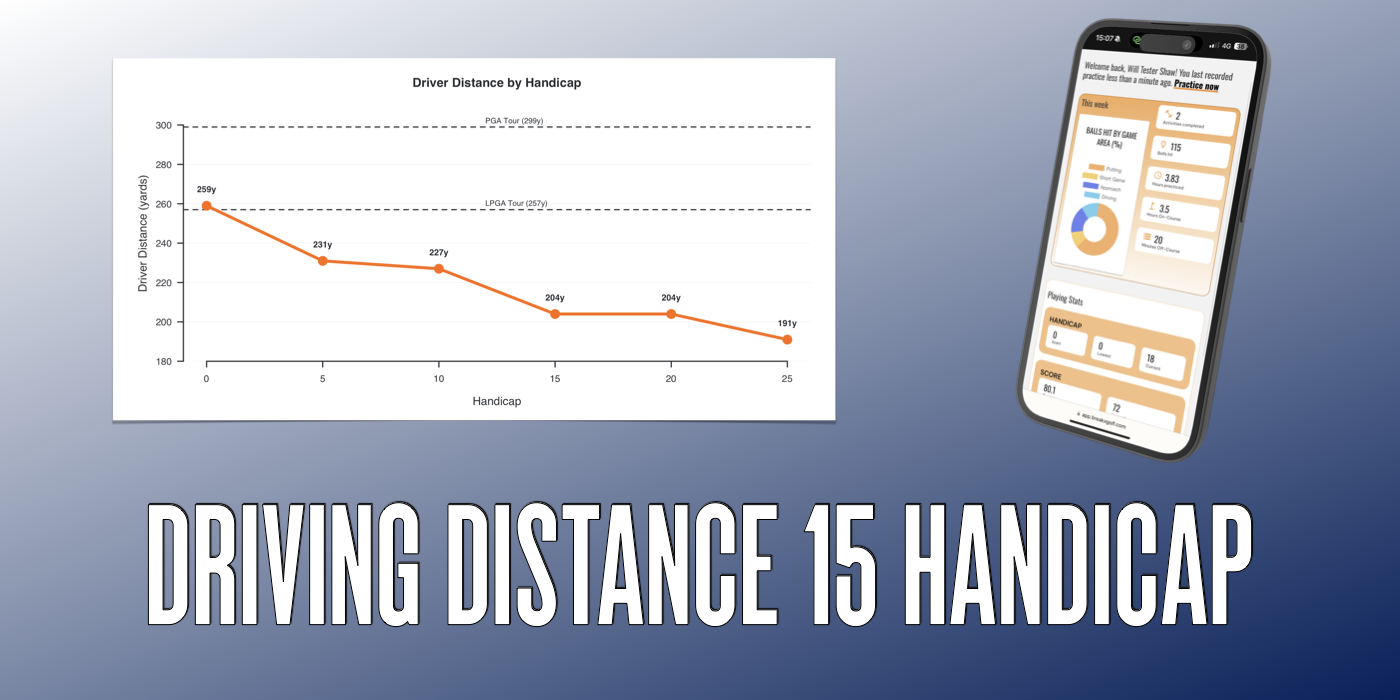Fifteen handicap golfers average 204 yards off the tee with the driver, representing a significant 23-yard gap from 10 handicap players. With other clubs, 15 handicappers show reasonable gapping—176 yards with the 3-wood, 169 with a 3 hybrid, and 154 with a 4 hybrid. This distance profile means longer par 4s become genuine three-shot holes, and par 5s require three solid strikes to have any realistic chance at birdie.
📊 15 Handicap At-a-Glance:
- Average Driver Distance: 204 yards
- Fairway Accuracy: 47%
- Avg Approach Shot Distance: 189 yards
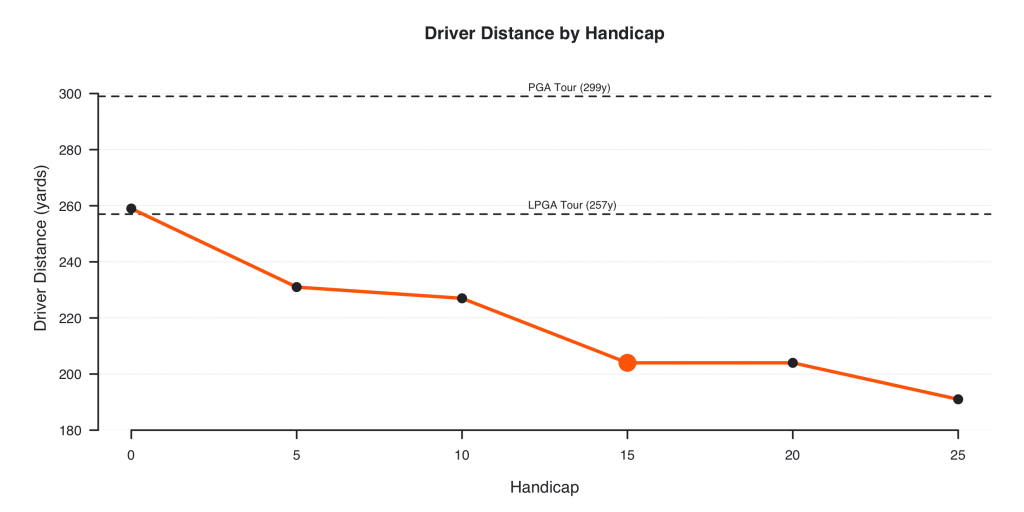
The fairway hit percentage sits at 47%—still matching scratch and single-digit players almost exactly. This consistency across handicap levels proves that fairway accuracy isn’t the differentiating factor between mid and low handicappers.
The approach shot distance of 189 yards reveals the real challenge: 15 handicappers are hitting mid-to-long irons into greens as standard, compared to the short irons that 10 handicappers face from 168 yards. That extra 21 yards on approach shots dramatically reduces proximity to the pin and birdie conversion rates.
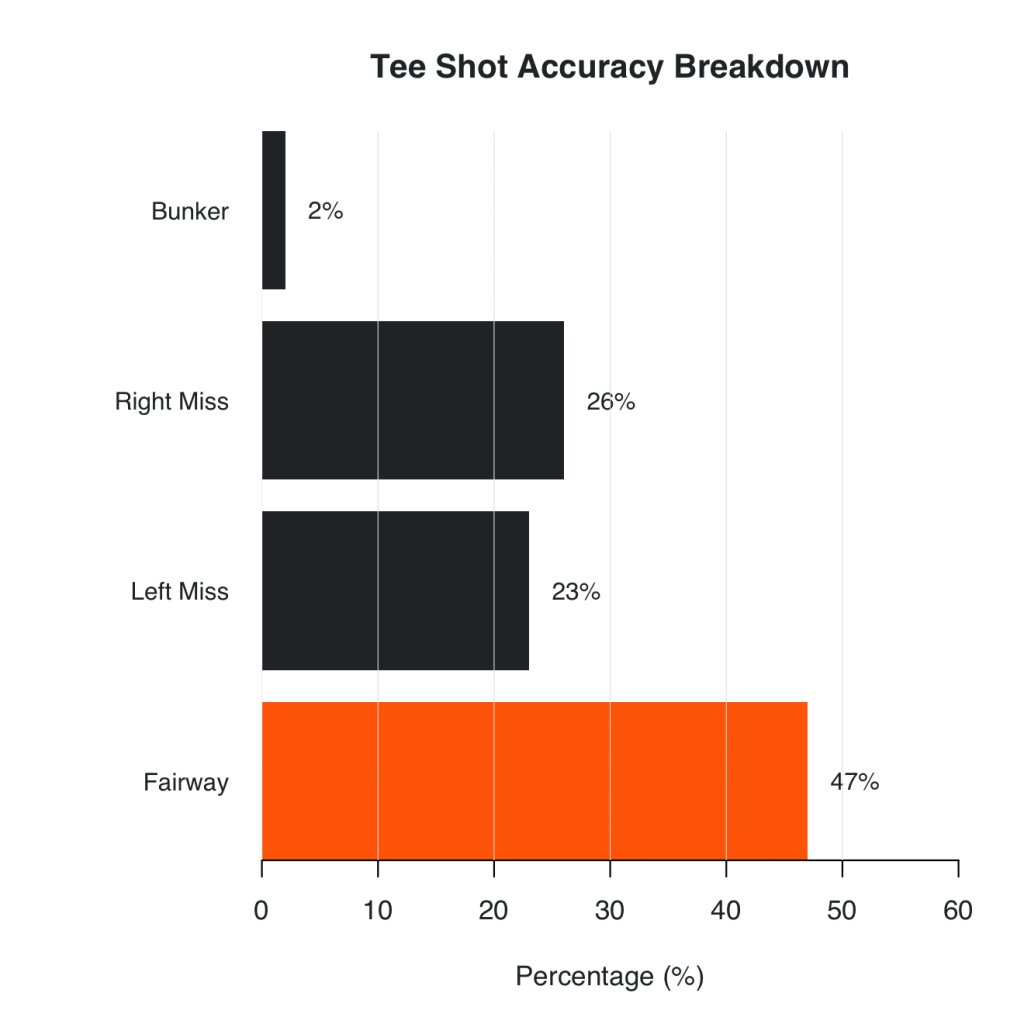
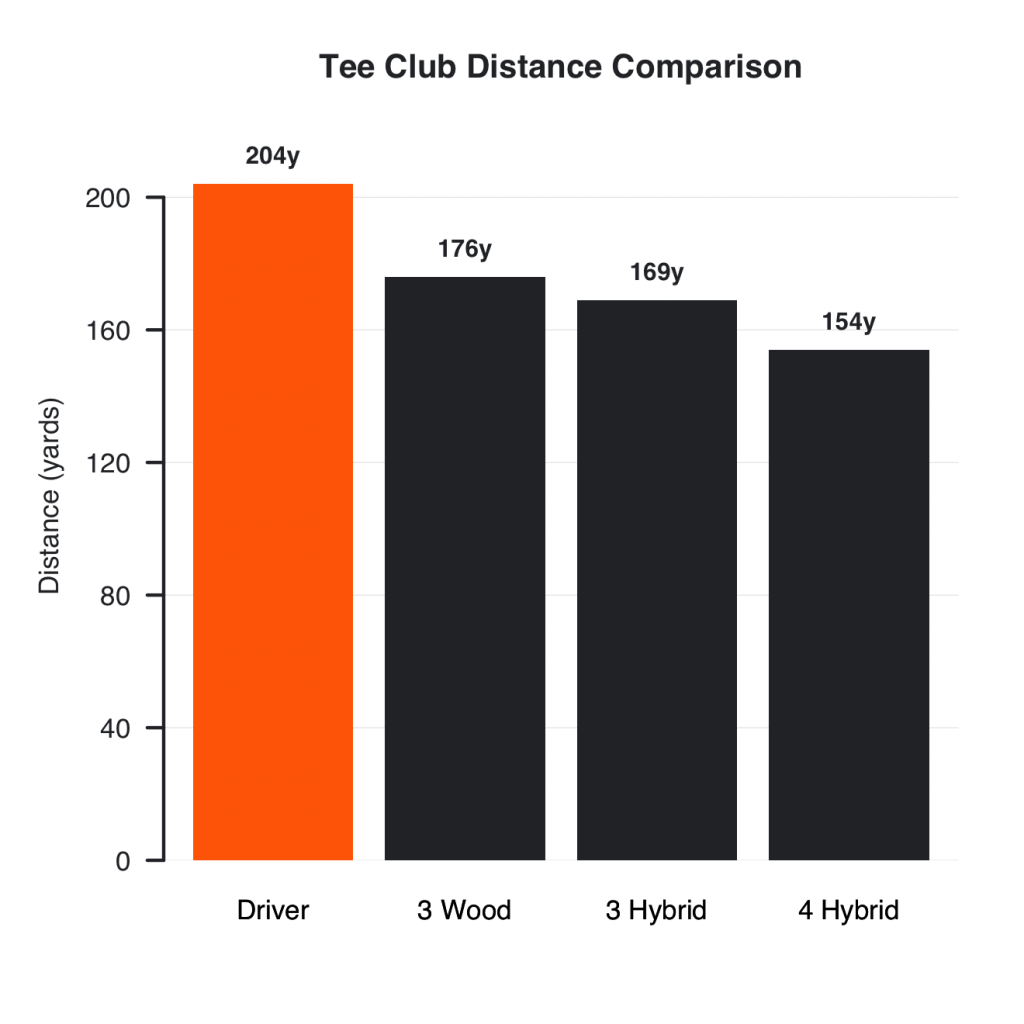
WHAT THIS MEANS FOR YOUR GAME
Here’s the critical insight that often gets overlooked: fairway percentage doesn’t tell the whole story. Across all handicap levels, fairway accuracy stays remarkably similar—ranging from 45-50%. But 15 handicap golfers show a slight decline in angular precision compared to single-digit players, along with hitting their drives shorter distances.
A 15 handicapper hitting 204 yards and missing by 13 yards is 3.6° offline. That’s only marginally worse than 10 handicappers at 3.8°, and still reasonably tight. Compare that to a 25-handicapper hitting 191 yards with the same 13-yard miss—that’s 3.9° offline. Your directional control off the tee is competitive; the problem is that you’re giving away 23 yards to 10 handicap players, which translates to an entire club difference on approach shots.
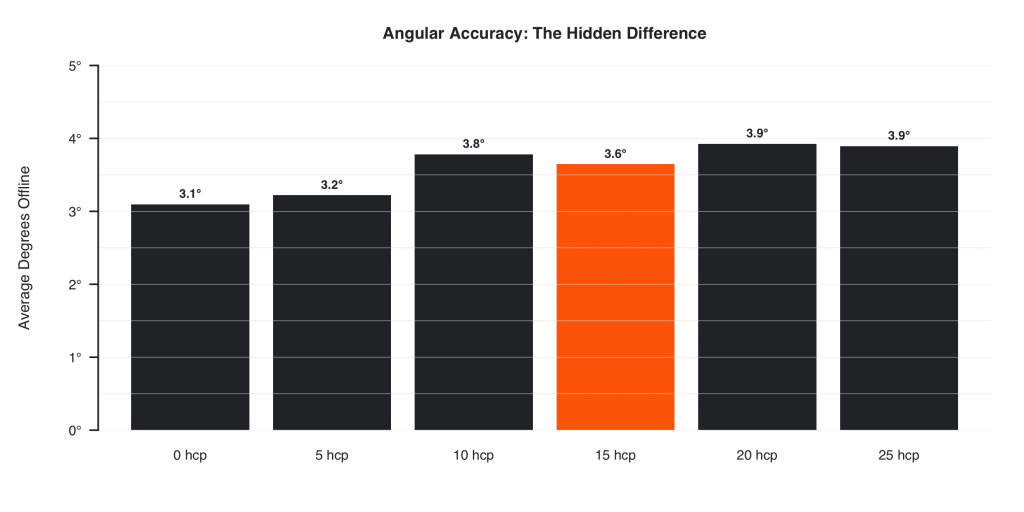
The data also shows a clear correlation between distance and scoring. When 15 handicappers hit it 225 yards or more, they average birdie or better on those holes. Drop to 189 yards (double bogey outcomes), and you’re looking at a 36-yard penalty. Distance directly creates scoring opportunities by shortening approach shots and making par 5s more reachable.
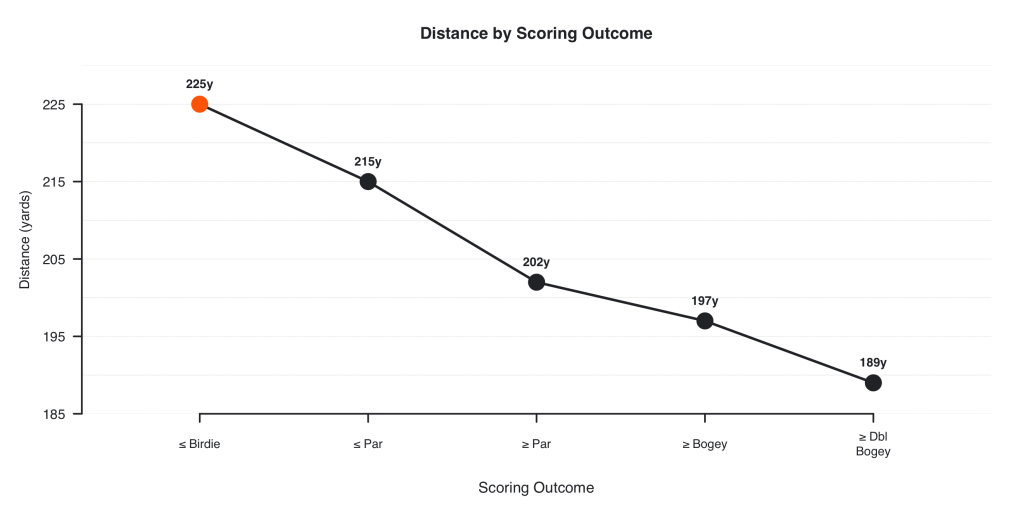
If you’re working toward 10 handicap from 15, gaining driver distance should be a priority. Those 23 extra yards would cut your approach shots from 189 to roughly 168 yards—turning long irons into mid-irons and creating far more realistic birdie chances. Your fairway accuracy is already solid at 47%; now you need the distance to match your directional control and compete with single-digit players.
TRACK YOUR STATS VS THESE BENCHMARKS
Knowing where you stand against 15 handicap benchmarks is the first step. Understanding exactly which skills will move you toward your target handicap is step two. Break X Golf uses your actual playing stats to build personalised practice plans that target your biggest scoring opportunities—helping you identify whether you need to prioritise distance gains, iron play, or short game to break into single digits.
